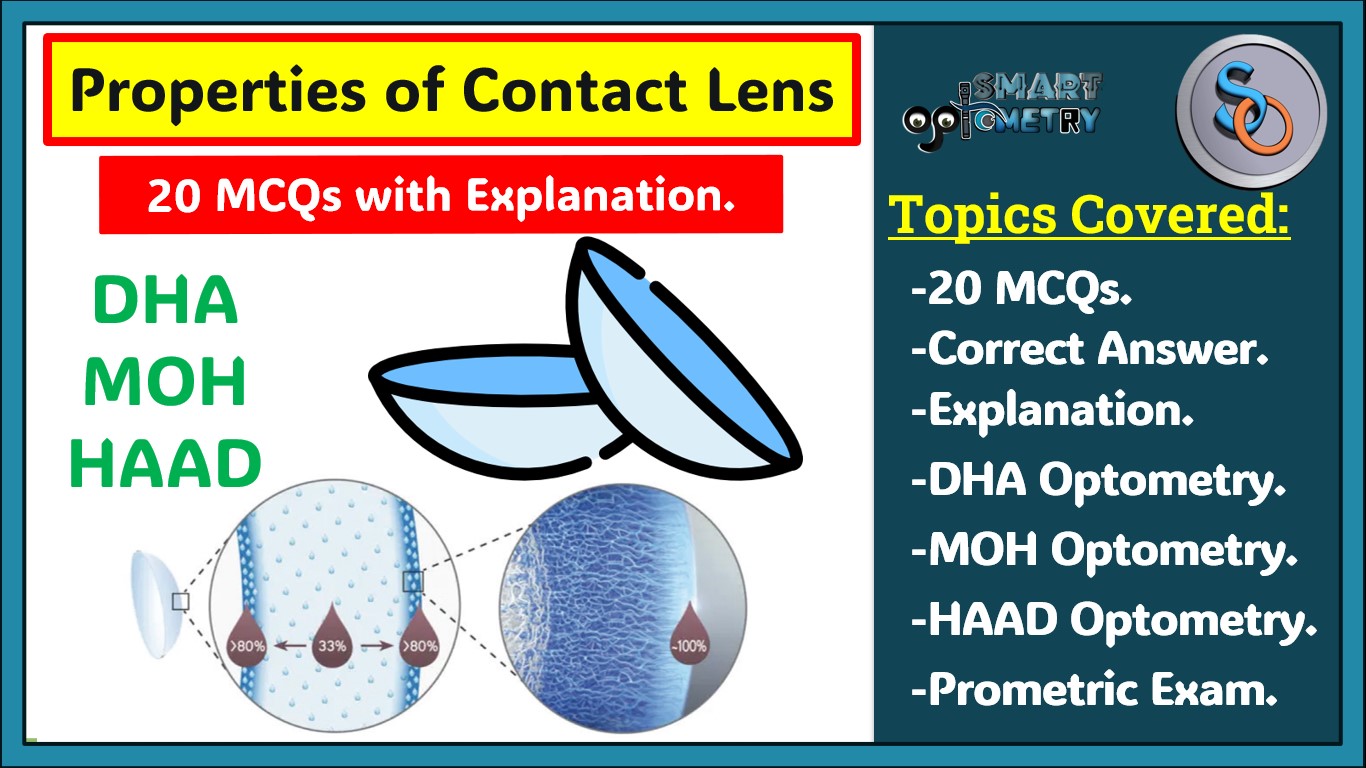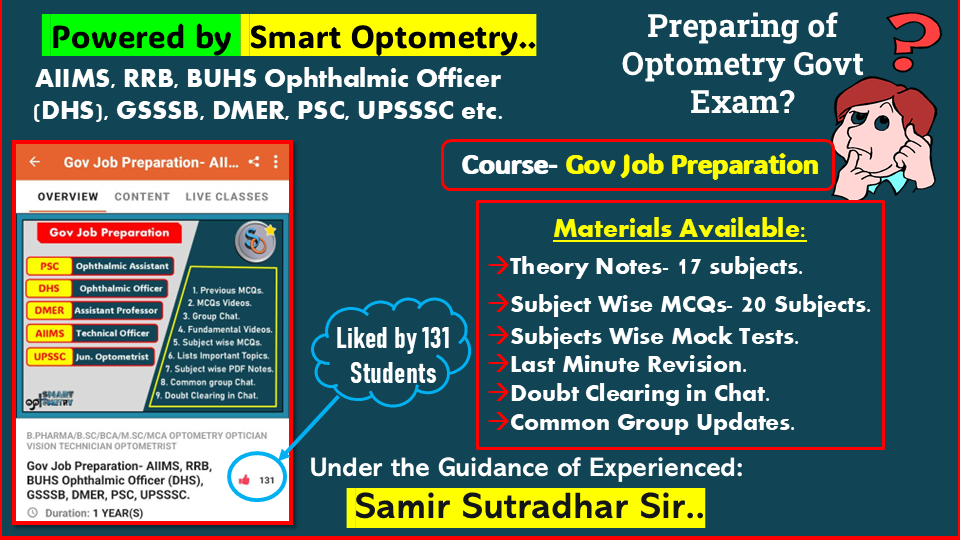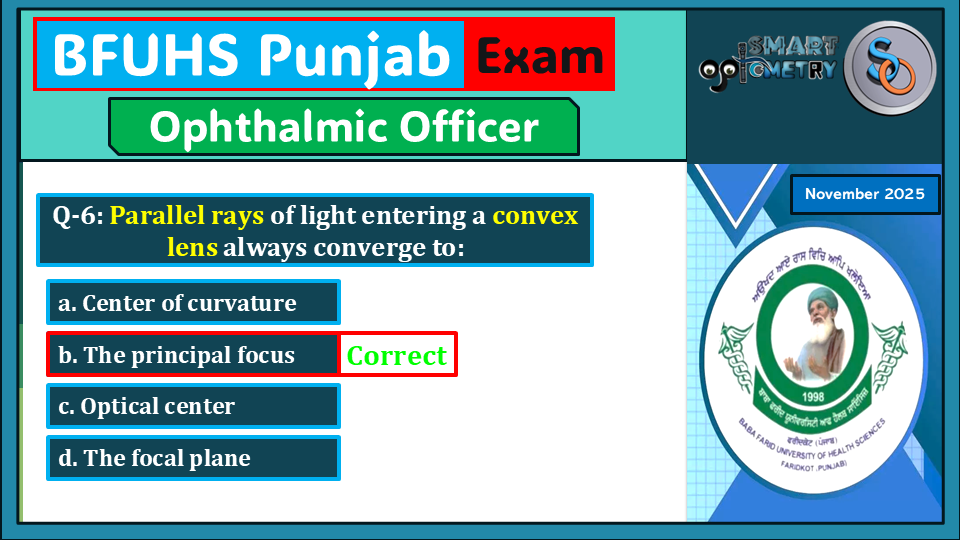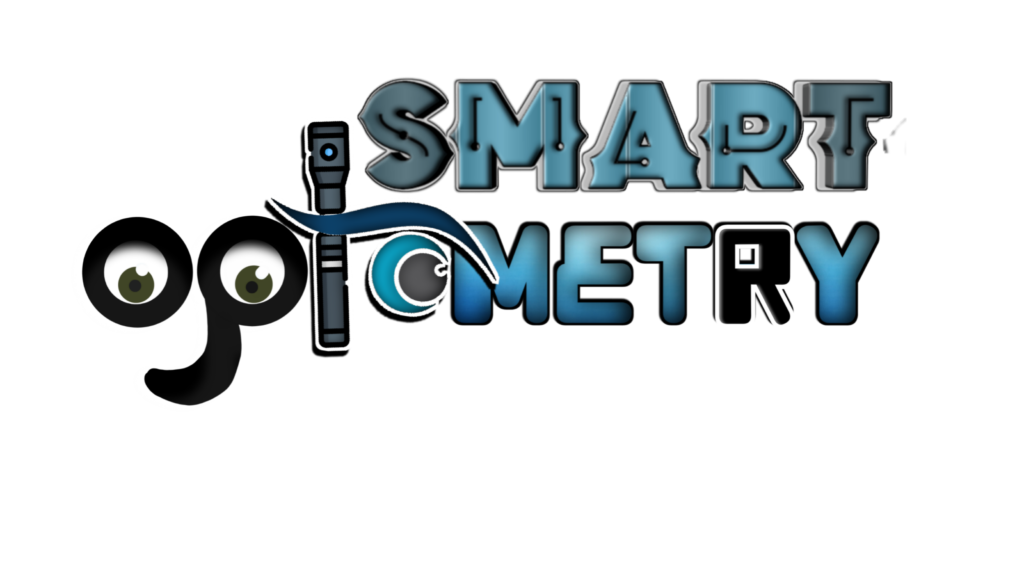- 1. The ability of a contact lens material to align the ocular surface and not deform under tension.
- A) Elasticity.
- B) Rigidity.
- C) Wettability.
- D) Ionicity.
Click “Show more” to see the answer and explanation.
Answer: A) Elasticity.
Explanation:
Elasticity in contact lenses is the ability of the contact lens material to align the ocular surface and not deform under tension. Ideal contact lenses should have a high elastic limit, should recover sharply within the limit and should be strong.
- 2. The ability of a contact lens to withstand deforming forces is called?
- A) Elasticity.
- B) Rigidity.
- C) Wettability.
- D) Ionicity.
- 3. The biological response of Contact Lens material to its environment is called?
- A) Elasticity.
- B) Rigidity.
- C) Bio-Availability.
- D) Ionicity.
Click “Show more” to see the answer and explanation.
Answer: C) Bio-Availability.
Explanation:
Bio-compatibility is a measure of how a material interacts with its environment and the biological response of the tears or lens care solution. It is important for contact lenses to have good bio-compatibility to ensure they do not cause harm to the eye.
- 4. The percentage of the contact lens that is constituted by water is called?
- A) Elasticity of CL.
- B) Rigidity of CL.
- C) Water Content of CL.
- D) Ionicity of CL.
- 5. What does a large contact angle measurement indicate in the Sessile drop method?
- A) The material is completely wettable.
- B) The material is somewhere wettable.
- C) The material is poorly wettable.
- D) The material is highly elastic.
Click “Show more” to see the answer and explanation.
Answer: C) The material is poorly wettable
Explanation:
If the angle between the tangent to the drop’s surface and the horizontal test surface is large, especially more than 90 degrees, that means the material is poorly wettable.
- 6. What is the formula used to measure oxygen transmissibility of a contact lens?
- a) Dk/p.
- b) Dk/t.
- c) Dk/u.
- d) Dk/r.
Click “Show more” to see the answer and explanation.
Answer: b) Dk/t
Explanation:
The formula used to measure oxygen transmissibility of a contact lens is Dk = Dk/t, where D is the diffusion coefficient for oxygen movement in the material, k is the solubility constant of oxygen in the material, and t is the central thickness of the contact lens.
- 7. What is the range of water content in contact lenses, considered as high-water content?
- a) 20-40% .
- b) 41-60% .
- c) More than 60% .
- d) Less than 20%
- 8. The ability of a contact lens to transfer oxygen to the cornea is called?
- A. Oxygen Transmissibility (Dk/t).
- B. Oxygen Permeability (Dk) .
- C. Both A & B.
- D. None of These .
- 9. What is a material with a Dk value below 20 considered as?
- a) Low oxygen permeable material .
- b) Mild oxygen permeable material .
- c) High oxygen permeable material .
- d) Hyper Dk material .
Click “Show more” to see the answer and explanation.
Answer: a) Low oxygen permeable material
Explanation:
A material with Dk value of Below 20 is consider as Low O2 Permeable material.
Dk between 20 to 40 is Mild permeable material,
Dk of 40 to 60 is High permeable.
And Above 60 Dk is Hyper Dk material
- 10. What can happen if there is lower oxygen transmission to the cornea?
- a) Microcysts.
- b) Change in corneal pH level.
- c) Edema.
- d) All of the above.
- 11. The net charge on the contact lens material’s surface is called?
- A) Elasticity.
- B) Rigidity.
- C) Wettability.
- D) Ionicity.
- 12. What is an ideal tonicity for a contact lens solution?
- a) Hypertonic.
- b) Hypotonic.
- c) Isotonic.
- d) Variable.
Click “Show more” to see the answer and explanation.
Correct answer: c) Isotonic
Explanation:
An ideal contact lens solution should be isotonic and contain 0.9% NaCl, which means it has the same osmotic pressure as the tear film. If the solution is hypertonic or hypotonic, it can affect the water content and dryness of the lens.
- 13. What happens to the water content of a contact lens with an increase in rigidity?
- a) It increases.
- b) It decreases.
- c) It remains the same.
- d) It is not affected by rigidity.
- 14. What happens to rigidity with an increase in thickness of the contact lens?
- a) It decreases.
- b) It remains the same.
- c) It increases.
- d) It is not affected by thickness.
- 15. Which type of material has negative poles on the outer surface?
- a) Ionic material.
- b) Non-ionic material.
- c) Both ionic and non-ionic materials.
- d) None of the above.
- 16. Which type of material has less chance for deposits of charged particles and debris?
- a) Ionic material.
- b) Non-ionic material.
- c) Both ionic and non-ionic materials.
- d) None of the above.
- 17. What is the advantage of low water content contact lenses?
- a) Higher oxygen permeability.
- b) Less rigid.
- c) More susceptible to pH.
- d) None of these.
- 18. What is considered low water content for a contact lens?
- a) Less than 20% .
- b) 20-40% .
- c) 41-60% .
- d) More than 60% .
- 19. What is the effect of tear proteins on non-ionic material?
- a) It enhances wettability.
- b) It has no effect on wettability.
- c) It reduces wettability.
- d) It increases deposits on the surface.
- 20. Higher the water content higher the Rigidity.
- A. True.
- B. False.
If you’re preparing for the Dubai Health Authority (DHA) or Ministry of Health (MOH) license exams as an optometrist, this blog is an invaluable resource. We’ve compiled 21 previous years’ DHA and MOH exam questions specifically tailored for optometry students and professionals. Each question is accompanied by detailed answers and explanations, helping you to thoroughly understand the concepts and improve your chances of success.
This blog serves as an all-in-one guide, offering DHA MCQs online and MOH MCQs online that are essential for your exam preparation. Whether you’re looking for a DHA MCQs book, a DHA MCQs PDF, or DHA MCQs paper, this blog has you covered. We provide a comprehensive collection of DHA exam questions for optometrists, including DHA question papers and DHA questions & answers for optometry.
Similarly, for those preparing for the MOH license exam, we’ve included a range of MOH exam questions for optometrists. You’ll find MOH question papers, MOH questions & answers for optometry, and even MOH MCQs books and PDFs to aid in your studies. Our collection is designed to simulate the actual exam experience, ensuring that you are well-prepared for both the DHA and MOH exams. Whether you are searching for DHA question papers for optometrists or MOH question papers for optometrists, this blog offers a reliable resource to guide your study process. Dive into these expertly curated questions and answers to boost your confidence and knowledge as you prepare for your DHA and MOH optometry exams.
- Check Our Courses: Ophthalmic Instrumentation, Clinical Refraction, Contact Lens, Binocular Vision, Dispensing Optics, MCQs in Optometry
- Download our App “Optometry Notes & MCQs” from Google Play Store.





4 Comments
You can download out app and enroll in courses for theory notes. This will help you to find answers for long questions.
App: https://play.google.com/store/apps/details?id=co.robin.osvlt
Current Course Prices:
Dispensing Notes: 6 months 399 rupees & 1 year 499 rupees.
Contact Lens Notes: 6 months 399 rupees & 1 year 499 rupees.
Low Vision Notes: 6 months 399 rupees & 1 year 499 rupees.
I need long question answer for dispensing, contact lens& low vision,can u please help me
There is a course where I guide the students to prepare for their Exam. You just need to enroll in the course “MCQs in the Optometry” then it’s our responsibility to guide you to prepare for the exam till you pass the exam.
In this course you will get 1000+ previous year Prometric MCQs, 5000+ subjectwise MCQs, Theory notes, Videos, Group Chat and live Support to clear your doubts.
📌App link: https://play.google.com/store/apps/details?id=co.robin.osvlt
📌Course link: https://osvlt.on-app.in/app/oc/213265/osvlt?utm_source%3Dcopy-link%26utm_medium%3Dtutor-course-referral%26utm_campaign%3Dcourse-overview-app
Hello ,I am going to appear in haad exam.can you help me in previous haad mcqs.thanks.